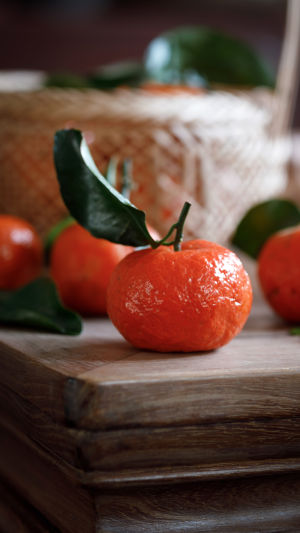After entering autumn, a type of fruit quietly occupies a corner of the fruit market and might even take the spotlight in the future.
Do you know what it is? Yes, it's the sweet and sour orange.
Ripe oranges resemble small lanterns, cute and compact. Gently peeling them open releases a refreshing fragrance and reveals the tantalizing orange-colored flesh. The peeled orange looks like a bulb of garlic segmented into cloves. Holding a clove in your hand, you can observe it closely, resembling a curved moon. When bitten into, the burst of juice in the mouth is genuinely satisfying.
When buying oranges, some people prefer larger ones, thinking they have absorbed more nutrients and, therefore, have grown bigger. Some prefer oranges with yellow peels, assuming fully ripened oranges are sweeter. Others insist on buying oranges with leaves, believing they are fresher and juicier. However, you might have noticed that despite your efforts in bringing home bags of oranges, your family complains about their sourness, almost causing toothache.
Today, I'll teach you four tricks, each ensuring thin skin, abundant flesh, and ample juice.
1. Check the Navel:
When buying oranges, the first thing to look at is the navel. If the navel is a large, concave circle, choose those oranges. They are rich in juice and sweet and refreshing, with thin peels. If the navel appears as a small black dot, especially if it's tiny, these oranges tend to be more sour.
2. Examine the Stem End:
Look at the stem end, where the leaves are attached. If the surrounding peel is concave, the orange has thin skin and rich moisture, making it more fragrant and sweet. Avoid oranges with a convex peel around the stem end, as they usually have thicker peels and less moisture.
3. Test the Texture:
Feel the surface of the orange; fresh oranges are usually smooth with a good texture and a glossy appearance. Rough and uneven surfaces are not recommended, indicating longer storage time and significant water loss.
4. Squeeze for Firmness:
When buying oranges, gently squeeze them to test their firmness. Oranges with moderate softness are the best – they are the most flavorful, sweet, and juicy.
An orange that feels excessively soft may be spoiled or on the verge of spoilage, with potential rot inside. It might not be fully ripe if it feels hard, resulting in a more tart taste and less moisture.
Remember, when buying oranges, bigger or yellower is not always better. Remember these four tips, and each one guarantees thin, juicy, and delicious oranges.





